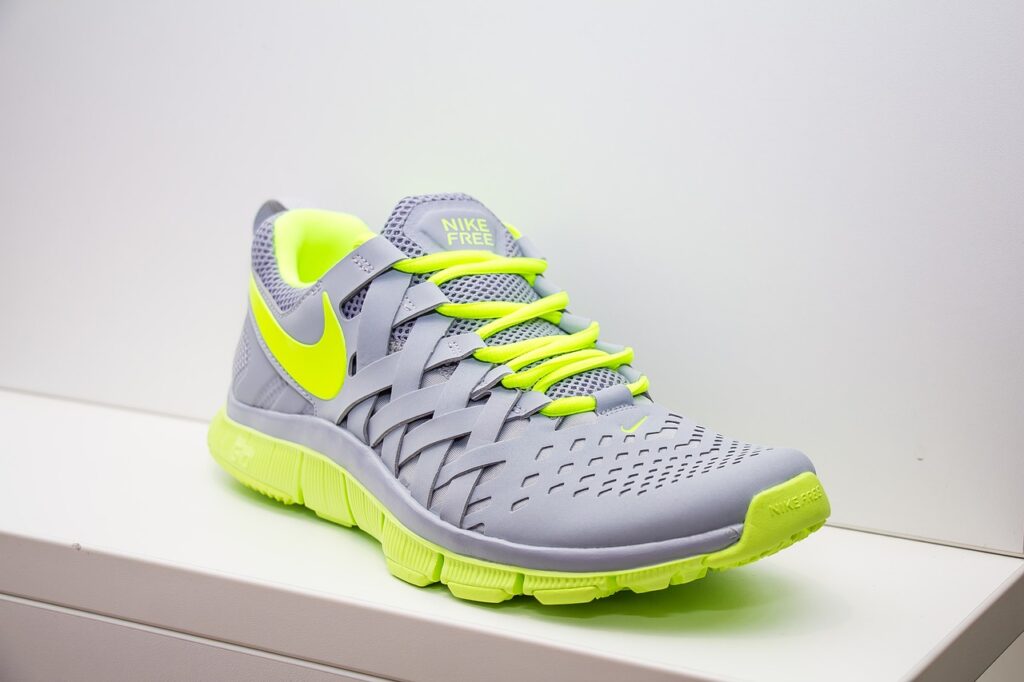Italian automakers are known for their style and sophistication, with elegant designs that don’t necessarily translate into practicality. Nonetheless, the Italian automotive sector is highly varied, ranging from the Piaggio microcars to the Ferrari race cars.
All Italian Car Brands: The Italian Motor Industry’s Inception
Currently, the automobile sector contributes 8% of Italy’s GDP. This industry employed close to a quarter of a million people in 2006. It makes sense because the greatest Italian automobiles are being made in large quantities and are well-liked not just in the Apennine Peninsula but also in other nations like Poland.
The Italian automobile industry has a long history that began in the 1800s. Enrico Bernardi built the nation’s first gasoline-powered three-wheeler in 1884. But two years later, the oldest Italian automobile brand, Stefanini-Martina, was established. Another business, Isotta-Fraschini, was established in 1898. A year later, Fiat S.p.A. was founded, and for many years, it shaped the Italian automobile industry.
One of the most significant figures in the history of the Italian automobile industry, Giovanni Agnelli, was born in 1866 and took office as Villar Perosa’s mayor in 1892. Agnelli was among the group of industrialists who established the Fabbrica Italiana Automobili Torino, or F.I.A.T. for short (the “periods” were dropped from the name in 1906), seven years later, in 1899. Nevertheless, the first model—created by Aristide Faccioli, who would go on to become Fiat’s chief engineer—was introduced in the same year the firm was established.
Other well-known and illustrious Italian car brands include:
- Lancia (since 1906)
- Alfa Romeo (since 1910)
- Maserati (since 1914)
- Ferrari (since 1947)
- Lamborghini (since 1963)
What qualities distinguish Italian automobiles?
How can you identify an Italian-made vehicle? Firstly, by their aesthetics, which have made all Italian car brands renowned across the globe. The most aesthetically stunning buildings were created in France even before the Second World War began and Paris was the city that everyone looked up to. The French socialist leaders didn’t decide to purposefully destroy the French car industry as a form of retaliation against the upper class until after the war.
Although the names Ghia and Vignale are now linked to Ford, these were once independent Italian design studios. Since its opening in 1930, Carrozzeria Pininfarina has been owned by the Indian Mahindra & Mahindra company.
The Bertone studio collaborated with Fiat and Alfa Romeo as early as the 1920s, but it also created several noteworthy designs for other companies. Bertone’s future is indeed uncertain. It filed for bankruptcy in 2014, but there’s still hope the business has more to say.
Reliability and other practical features have always been secondary to the design of all Italian car brands. Germany makes cars that are trouble-free and a good option for anyone looking for one. In terms of sustainability, Japanese automobiles are thought to be the best. Still, none of these could compare to all Italian brands when it came to luxury cars’ appearance.
All Italian Car Brands: Popular Italian Car Brands
The most well-known Italian automakers have the quality of standing on their own and not needing to be introduced. Does anyone know anything about Lamborghini or Ferrari that they do not? And lastly, has anyone ever worked on a vehicle that had the Fiat emblem on the hood? Let’s examine the specific manufacturers and their backgrounds, just to be sure.
1. Ferrari

As you read up on all Italian car brands, it is worth noting that Ferrari is one of the most popular Italian car brands. Since 1947, Maranello has been home to Ferrari, the company most renowned for its recognizable black horse logo and high-performance sports vehicles. The business was started in 1938 by Italian racer Enzo Ferrari, who had previously driven for Alfa Romeo. The first Ferrari, the 125 S, had a less appealing look but was powered by a 1.5-liter, 120-horsepower V12 engine that could achieve 155 km/h.
The aesthetics of later Ferrari models were enhanced through partnerships with design firms such as Scaglietti, Bertone, and Vignale. The brand’s elegant vehicles’ V8 and V12 engines constantly produced excellent performance. Ferrari makes automobiles in a variety of hues, even though red is their most well-known color.
The Italian automaker, which was formerly a part of the Fiat group, has produced several amazing cars. Ferrari 275 GTB, Testarossa, F50, and F550 Maranello are a few examples of these.
2. Maserati

One of the most well-known Italian car brands is Maserati, so keep that in mind while you research all of them.
The four Maserati brothers began their careers at Isotta Fraschini, an Italian company, and their history is intimately linked. They founded Società Anonima Officine Alfieri Maserati in 1914. Before developing their racing vehicles under the Maserati brand, including the Maserati Tipo 26, which took first place in races, they had been manufacturing racing cars for Diatto.
Maserati gained recognition over time for its outstanding ideas, strong engines, and racing accomplishments. The business maintained its racing mentality even as it moved its emphasis to road cars in the late 1950s.
As a member of the Stellantis group today, Maserati produces a range of high-end vehicles, including SUVs like the Levante, sedans like the Ghibli and Quattroporte, and the MC20 model, which honors the company’s racing history.
3. Lamborghini

It is important to keep in mind that Lamborghini is one of the most well-known all Italian car brands while you research all of them. The history of Lamborghini began in 1947, when Ferruccio Lamborghini, the company’s creator, produced successful tractor-style electric cars. Ferruccio, however, also had a passion for sports cars and possessed a Ferrari that he wished to enhance. He received criticism for his improvements to Enzo Ferrari, along with the well-known remark that a “truck driver” shouldn’t advise on automobile design. Ferruccio decided to start his auto brand as a result.
As a result of this resistance, Lamborghini became one of Italy’s leading automakers, producing legendary vehicles like the Miura, Countach, Diablo, Murciélago, and the most recent Aventador. They also have the Lamborghini Urus, a super utility vehicle with a potent 641-horsepower engine.
Over the years, there have been several ownership changes for the sports vehicle sector, including periods with Chrysler and Megatech. Audi AG, a division of the Volkswagen Group, has been the sole owner of Lamborghini Automobili S.p.A. since 1998.
4. Pagani
Compared to its Italian rivals, Pagani is a relatively new brand that is well known, having been established in 1992. Its first vehicle, the Zonda, was a huge hit, even though it was new. Horacio Pagani, the company’s founder, continued to work with Lamborghini through Pagani Composite Research after leaving the company.
Mercedes A.M.G. 12-cylinder engines power Pagani vehicles. After launching the Zonda 12, they went on to release more exorbitantly costly high-performance variants. The same supercharged V12 engine, situated behind the driver, powers all of Pagani’s Huayra models today.
5. Lancia

Among the most well-known Italian car brands is Lancia, which you should keep in mind while researching all the Italian car brands. Vincenzo Lancia established the Lancia firm in Turin, Italy, in November 1906 to produce passenger automobiles. They soon created the Tipo 51 or 12 H.P., also referred to as the Lancia Alpha. Lancia accomplished several firsts in the automotive industry.
The Lancia Theta had complete electric equipment in 1913. The Lambda debuted an independent front suspension and unibody in 1922. The Lambda Augusta introduced hydraulic brakes to the sedan class in 1933.
The business kept expanding even after Vincenzo Lancia’s 1937 passing. Lancia vehicles were seen in Formula 1 races and rallies. However, in 1969, Fiat took over due to financial issues. In addition to producing more traditional models like the Beta and Thema, Lancia also built famous models like the Delta and Stratos. In the years that followed, other Lancia models had trouble finding customers, despite their creative fixes.
6. Alfa Romeo

Without a doubt, Alfa Romeo is one of the all Italian car brands. One of the oldest sports vehicle companies in Italy, Alfa Romeo, is known for its divisiveness on a global scale. While some love it, others are not as understanding of its shortcomings. The origin of the brand began in 1906, when Alexandre Darracq established a business close to Milan. At first, it sold automobiles before going on to produce its own.
Due to financial difficulties, it was sold to a group of businessmen in 1910 and given the name Alfa. After Nicola Romeo assumed leadership at the close of World War I, the brand’s name continued to change. Alfa Romeo’s usage of boxer engines set them apart from other Italian automakers. Fiat Chrysler Automobiles N.V., an Italian-American firm, is presently the owner of the brand.
The business was taken over by the state in 1933, yet it remained independent. Fiat Group purchased Alfa Romeo in 1986. The company kept up its impressive design, frequently working with Carrozzeria Pininfarina. The current Alfa Romeo Giulia, which competes with German rivals, and the iconic model, which ran from 1962 to 1978, are notable models. The Stelvio and the Tonale are the two S.U.V.s that Alfa Romeo currently manufactures.
7. Fiat

Due to the unique features of Fiat, it became one of the all-Italian car brands. Fiat was created in 1899 by Giovanni Agnelli and other ambitious businesspeople. They most likely didn’t foresee its extraordinary success. They produced the first Fiat, the 3.5 HP model, that same year and the business went public four years later. Fiat opened branches all around the world, including one in New York. They constructed plants at Lingotto and Mirafiori before World War I.
Fiat quickly expanded through joint ventures and production under license in several nations, such as Poland and the Soviet Union. Fiat had a big impact on the Polish auto sector. Fiat purchased Lancia and Ferrari in 1969. Ten years later, they combined Autobianchi and Abarth to establish Fiat S.p.A. Fiat now plays a major role in the Stellantis group, which unites French and Italian automakers.
Let’s ignore these remarks because Fiat offers a wide range of passenger and utility cars. Additionally, there are convertibles and tiny automobiles, as well as vehicles with four-wheel drive.
8. Abarth
Carlo Abarth, a Scorpio by astrology, created Abarth, the Italian car brand for its scorpion logo, in 1949. At first, the firm concentrated on making faster and more potent versions of French (Renault and Simca) and Italian (Fiat and Alfa Romeo) automobiles. Abarth had a close relationship with Fiat and joined the company in 1971.
Before the brand temporarily stopped during the Lancia Delta’s heyday, they were the best at prepping Fiat rally vehicles. Nevertheless, Abarth returned in the early 21st century, with the unsatisfactory Seicento and Stilo models serving as the foundation. Later on, though, the Abarth 500 and Grande Punto proved to be successful; the latter is now their main model.
9. Iveco

Though it produces more than just freight vehicles, Iveco also makes military vehicles, buses, and Italian trucks. The truck divisions of Fiat, Lancia, OM, Unic, and Alfa Romeo were combined to form the Italian firm in 1975. Iveco grew through the acquisition of other businesses and facilities, such as Ashok Leyland in India, Czech Karosa, and a Ford truck facility in the UK.
Like Fiat’s Ducato, its most popular model is the Daily. Iveco operates more than 40 production facilities across Germany, Spain, Italy, and the Ukraine. Additionally, they manufactured automobiles in Poland, specifically the Daily and Eurocargo in Poznań.
10. Piaggio
Given that the aforementioned firms all produce Italian automobiles, why is the Piaggio group—which specializes in scooters—positioned among them as a premium car manufacturer? It has a very lengthy history and plays a significant role in the history of the Italian automobile industry. The company was established in 1884, but it took a while for it to begin dealing with the automobile sector regularly.
Piaggio chose to enter the automotive business after World War II and produced the Vespa scooter and Ciao motorcycle. They also manufactured commercial vehicles, such as the 2021-produced Piaggio Porter, a tiny vehicle of 319.5 cm in length, and the three-wheeled Piaggio Ape.
With a length of almost 4 meters, the present second generation is bigger. Located in Pontedera, Piaggio & Co. S.p.A. is a distinct group that is well-known for its well-liked two-wheeler brands, making it one of the biggest motorcycle manufacturers worldwide.
Defunct Italian car Brands
The Italian auto brands that are still in use today are globally renowned and acknowledged. What about the Italian automakers, who have long since ceased to exist? These are also worth remembering because they contributed to the history of the Italian automobile industry.
O.S.C.A
Officine Specializzate Costruzione Automobili, or O.S.C.A., was an Italian car brand that was in operation from 1947 to 1967. The brothers Maserati, who had previously been connected to the Maserati brand, founded it. O.S.C.A. is a manufacturer of little sports cars, mostly used in Formula 2 competitions.
Although they had the financial means to compete with Ferrari and Alfa Romeo, they still had dreams of being in Formula 1. O.S.C.A. was eventually taken over by MV Augusta after the Maserati brothers retired due to shifting circumstances in the motorsports industry.
Qvale
The longest-running Italian auto firms are well-known, but what about the shortest-running—and now-defunct—auto brands? A noteworthy instance is the Qvale brand, which manufactured a single car over two years between 2000 and 2002.
The Qvale family, who had previously worked in the American auto industry, founded the company and took a risk by obtaining a license from De Tomaso to produce the two-door Qvale Mangusta. There were about 280 produced, most of which were sold in the United States. However, Qvale was discontinued in 2002 as a result of the MG Rover Group acquiring the brand.
Fissore
Italian car brand Fissore and Carrozzeria Fissore are one example of their joint venture. When it was first established in 1919, it produced horse vehicles before moving on to produce trucks and passenger cars. Commercial vehicles and bodywork production for other manufacturers, including Fiat, O.S.C.A., Monteverdi, De Tomaso, and T.V.R., constituted its primary business activities. Nevertheless, poor management caused financial problems, and the business managed to continue operating under various identities until 2000.
Innocenti
Innocenti rose to prominence before World War II but was momentarily shut down by bombing during the conflict. Following that, they started manufacturing tiny vehicles and scooters under British license, such as the Innocenti A40 and Innocenti Mini. British Leyland purchased Innocenti in the 1970s, and De Tomaso later purchased it. Innocenti was Founded in Milan in 1933,
Although Mazda expressed interest, Fiat eventually gained control and integrated it into the Agnelli family’s business empire. Although Innocenti stopped making cars in 1990, the company continued to produce significantly altered Fiat models bearing the Innocenti logo for a few more years.




